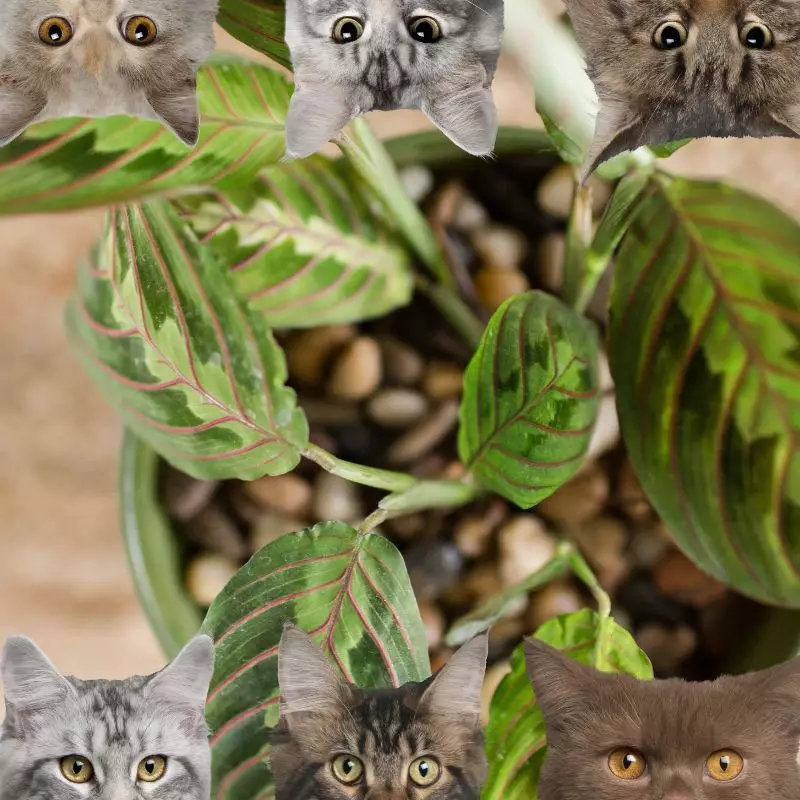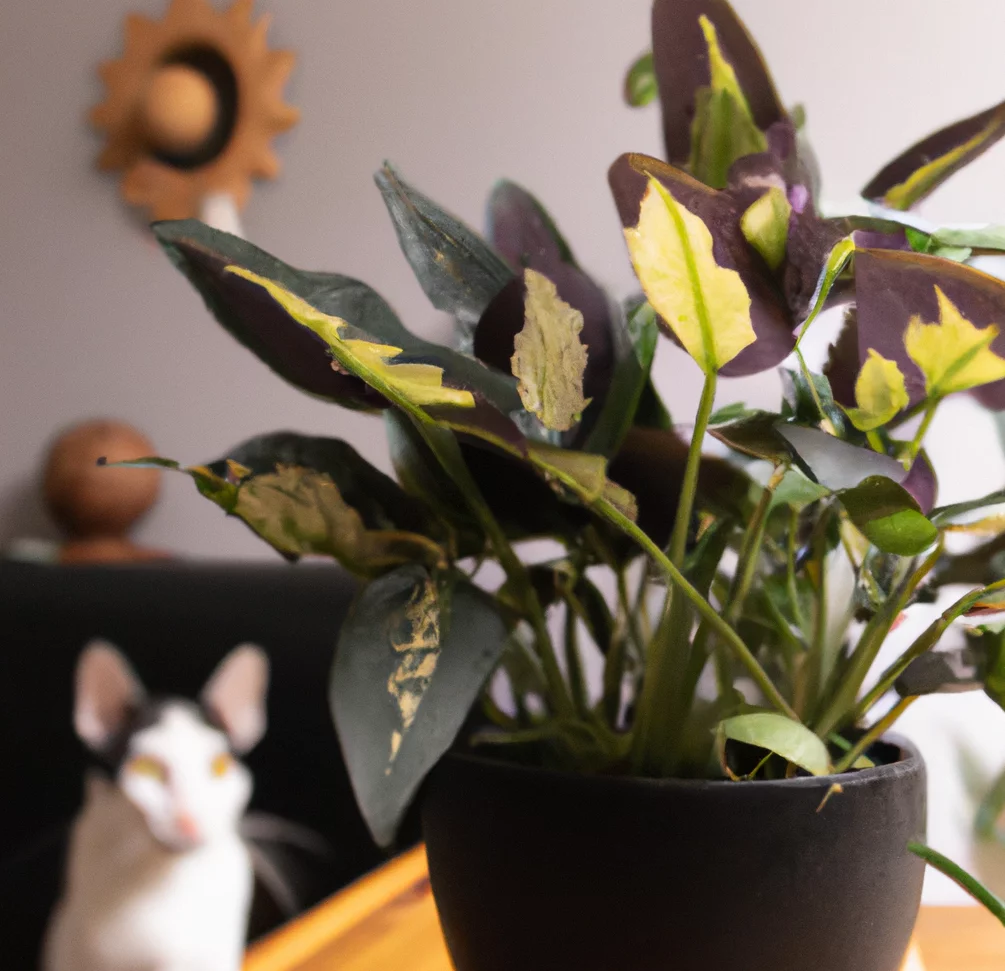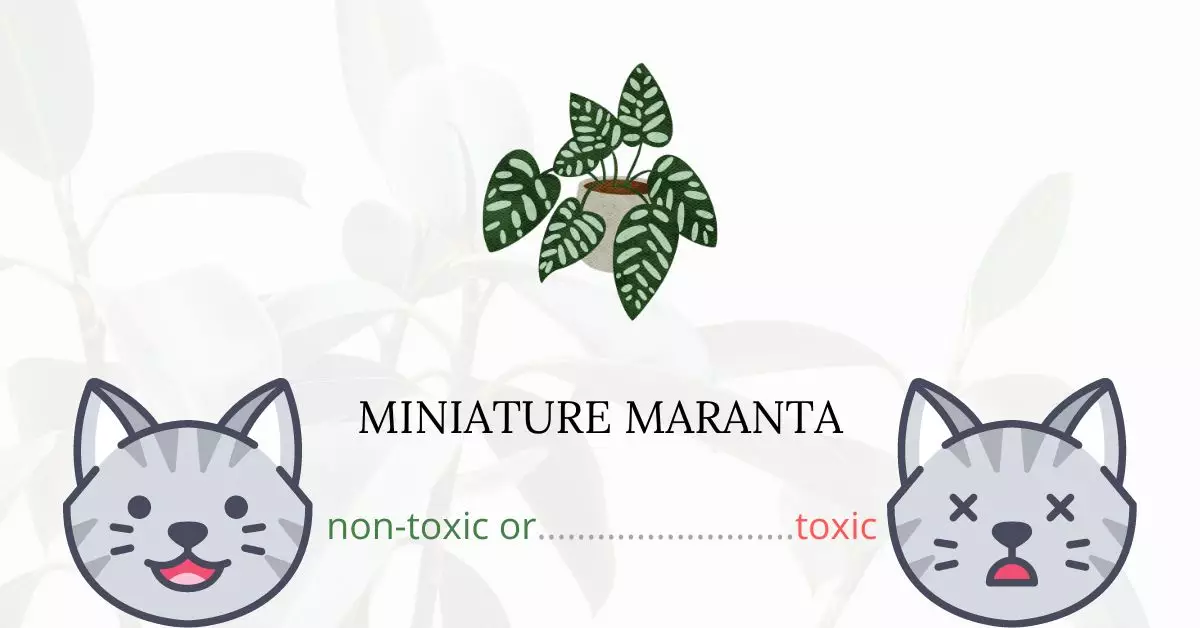Miniature maranta is not toxic for cats, ensuring it is safe to have in homes with feline residents. While there are no known toxic substances in miniature maranta, allowing cats to consume any houseplant isn’t generally recommended.
This article has been written in close collaboration with a team of experienced DVMs (doctors of veterinary medicine). With their insights, we provide accurate and up-to-date information on the potential risks associated with various plants, focusing here on Miniature Maranta and its effects on cats. Furthermore, to ensure the reliability of our content, we have researched high-authority websites such as the ASPCA and PetMD for comprehensive information on each plant.
Continue reading to learn more about the precautions to take when introducing houseplants into an environment with cats.
Can Cats Eat Miniature Maranta?

You may ease your worry if your cat has only bitten a tiny part of a miniature maranta. However, ingestion of excessive amounts of this plant can cause cats to suffer from indigestion. This is because they cannot fully digest plant materials in their stomach.
Carnivorous animals like cats feed on protein-based meals. Thus, plants are not suitable to be included in their regular diet. There are some plants that cats can eat but always remember to give them in moderation.
If you have houseplants, you should also be aware of the products that you use on your plants. Some commercial plant care products like fertilizers and insecticides leave toxic chemical residues on plants. Once these residues were eaten or inhaled by your kitty, it may cause them poisoning and a life-threatening situation.
What is a Miniature Maranta?

Scientifically known as Goeppertia micans and previously as Calathea micans, miniature maranta belongs to the Saxifragaceae plant family and is also known as the prayer plant.
Miniature Maranta is a tiny tropical herbaceous perennial from South and Central America in the Marantaceae family that grows by rhizomes. The leaves fold together in a way like prayer hands at night, thus the common name.
Outside of its native nations, this plant is commonly cultivated as an indoor houseplant at room temperatures, requiring uniformly wet, well-drained, peaty potting mixes. It is indigenous to Central and Tropical South America.
Miniature maranta is an evergreen plant. The simple leaves are alternately arranged. They are ovate, whole, and petiolate in shape. From June through August, it produces racemes of white funnel-shaped blooms. However, flowers are rarely seen on indoor plants. In pots, miniature maranta normally grows to be 12-16″ tall.
Keeping Cats Away From Miniature Maranta

You may drive your cats away by spraying vinegar and water solution on your plants. Cats dislike the sour smell and taste of vinegar so they most likely avoid it.
Another method is to use aluminum foil. Place aluminum foil around your plants and over the ground. It will serve as a barrier since cats do not like touching the aluminum foil. They detest its crinkly texture and odor.
Training your cats is the most essential method to keep them away from plants. Spray water on them, make loud noises, or simply say “no” when they approach your plants.
Plants to Avoid For Your Cats
If you are a cat owner and unsure if the plants growing in your yard are harmful to your cats, check out this list of toxic plants for cats. You can also check our list of non-toxic plants for cats.





